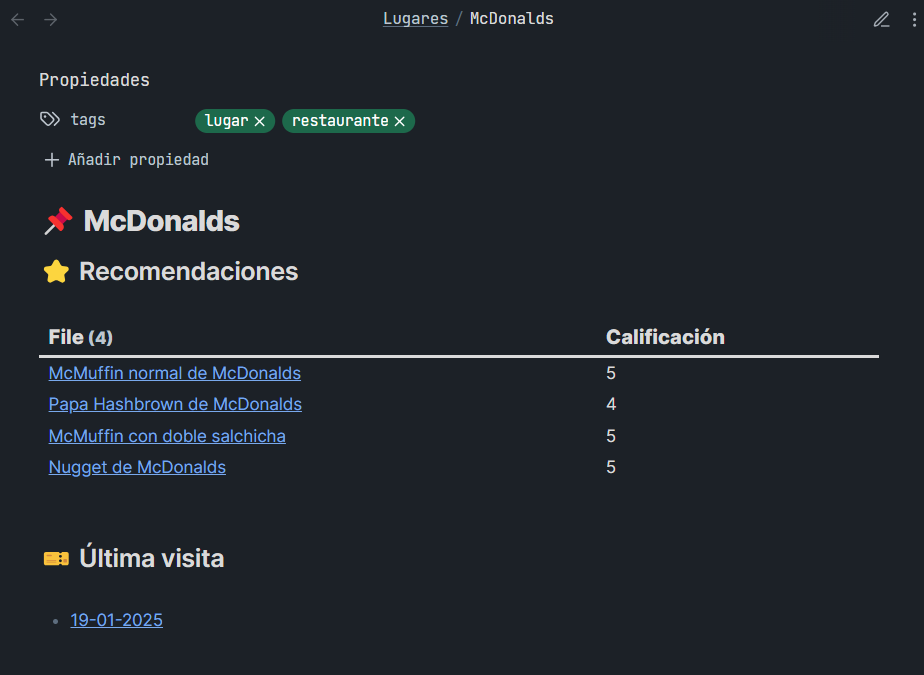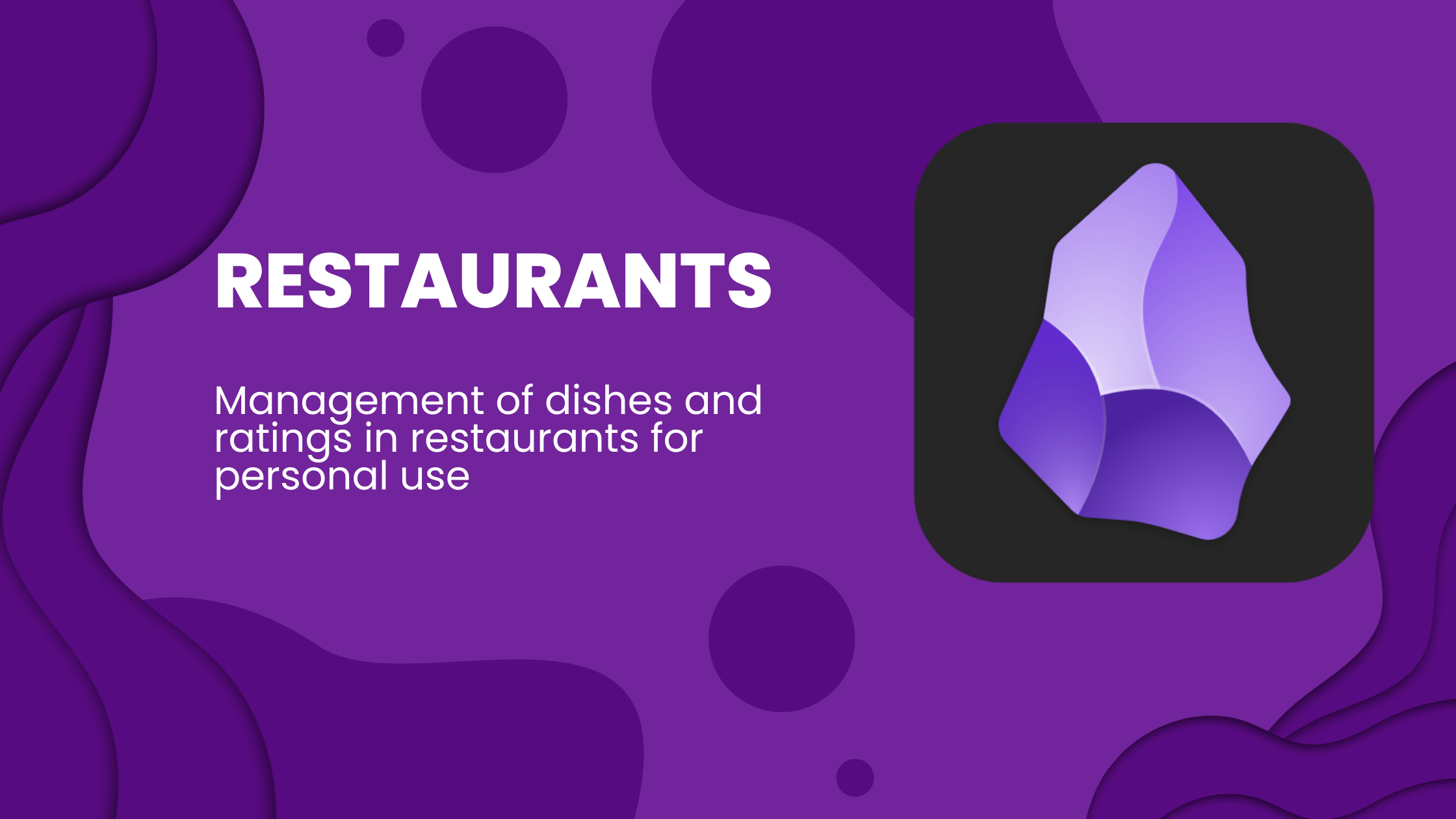I have a very bad memory, which is why I am so obsessed with having systems that make it easier for me to search for information. Many times, if I don’t structure it very well, I won’t remember how I saved it and will end up losing it anyway. This is a big part of why I like Obsidian so much as a tool; it allows me to structure things in a way very similar to how I do it mentally, meaning in relationships.
Due to this same lack of memory, I have encountered situations where, for example, I am someone who does not tolerate spicy food very well. So, when I go to a restaurant and want to order chilaquiles, I don’t remember if last time I ordered the green ones and they were too spicy, or if they were fine, or if the red ones were better, etc. To solve this, as in many other areas of my life, I have a system that helps me organize this information so that I can revisit it easily the next time I go to the restaurant. This way, I can see if I liked something, what details it had, how much I liked it, etc.
🧩 Parts
My system consists of 3 parts:
- Restaurant: The establishment or chain.
- Dish: The specific dish I am going to rate.
- Journal: This is usually linked thanks to the fact that in my Journal I log my meals.
🍽 The Restaurant
I create a note for the restaurant because this will be the note I visit when I return to that place. Additionally, I use this note so that, when creating a new dish, it can be linked to the restaurant it belongs to.
The structure is very simple. For this example, I will use my note about McDonald’s.
🏗 General Structure
---
tags:
- place
- restaurant
---
# 📌 McDonald's
## ⭐ Recommendations
```dataview
TABLE
calificacion as "Rating"
FROM [[]]
WHERE calificacion
```
## 🎫 Last Visit
```dataview
LIST WITHOUT ID link(dateformat(file.cday, "dd-MM-yyyy"))
FROM [[]]
SORT file.cday DESC
LIMIT 1
```
👀 Example Note

Now let’s break down each part of the note.
🏷 Tags
The restaurant notes have the following tags:
- Place
- Restaurant
Because my system includes various types of places, such as companies, it is necessary to make the distinction that it is a restaurant.
⭐ Recommendations
The recommendations are nothing more than a Dataview view that compiles all Dish notes, which we will see later, and displays them along with the rating I assigned. As shown in the image, I am a big fan of McDonald’s.
🎫 Last Visit
Finally, this section simply searches for the most recent entry that references the establishment and shows me the corresponding note for that date. This is one of the parts I like the least because it requires me to explicitly mention the establishment in my Journal note. I want to improve the query so that it detects when I reference a dish linked to the establishment, but I haven’t had time to do so.
🍕 The Dish
This note refers to the dish itself. I use this note from the restaurant, linking the note to the restaurant in the title to later retrieve the rating, but also to store nutritional information about the dish. This is more related to the nutrition aspect, so I won’t cover it here.
🏗 General Structure
---
calificacion: 5
tags:
- dish
---
# 🥘 McMuffin Regular from [[McDonald's]]
My opinion on the food. Any *detail* I should remember.
## 📊 Nutritional Information
[Calories:: 310 kcal]
[Proteins:: 12 g]
[Fats:: 13 g]
[Carbohydrates:: 20 g]
[Fiber:: 2 g]
[Sugars:: 2 g]
The dish has the tag dish to make it easier to filter in queries. Additionally, I include the rating in the metadata on a scale from 1 to 5.
In the body of the note, I can include any relevant information, such as whether the food was too spicy, if I should order it without tomato, or anything I want to remember for my next visit.
✍ Journal
I won’t show my journal because it contains private information, and besides, there isn’t much complexity to it. It simply involves mentioning the restaurant note in my journal entry. Once again, this is the part of the system that I like the least because it only works if it’s my first time at the place and I create dish notes, or if I make an explicit mention. If you have a better idea on how to ensure that each time I mention a dish note in my meals section, it gets “logged” as a visit, I would be very grateful if you left me a comment.
🏁 Conclusion
This system in Obsidian has allowed me to improve my organization and memory regarding restaurants and dishes I have tried. Although it has some areas for improvement, such as automating the last visit, its modular structure has been quite useful. In the end, the important thing is to have a system that adapts to my needs and can evolve over time. If you have suggestions on how to improve this methodology, I would love to hear them. Thanks for your time! 😊
